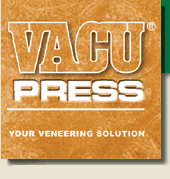Brian Gray

Posts: 339
Joined: 2004-01-21
Location: Sandusky, OH
 User Profile User Profile |
Honestly, everyone might have a varying opinion when it comes to handplane selection. I'll give you my take on it.
I would either choose Lie-Nielson, or Lee Valley. For me, it breaks down this way. LN has fantastic planes, and you pay for them. LV has planes of the exact same quality, but they are 2/3 to cost of LV, and they've made some improvements (for instance, frog adustment). I own planes from both companies, and I can't tell any difference in the results. For the price, and what I consider better engineering, I usually go with Lee Valley.
For your edge and inlay trimming jobs to be done, I would look at this plane...
http://www.leevalley.com/wood/page.aspx?c=2&p=47881&cat=1,41182,48942
Make sure that you have read up on sharpening and plane tuning. If you aren't getting results that you want, 95% of the time it's the plane that's improperly tuned.
Another option that is quite viable is to look at flea markets, antique stores, etc for old pre-war Stanleys. If you have the skills to refurbish and tune an old plane, I have some old stanleys that I got for $50 or so, and they perform perfectly after some tweaking, perhaps replacing the iron.
You also mentioned scrapers...you can get cabinet scrapers from pretty much anyplace. There's no real quality issues there. It's just a scrap of metal.
Just be careful...once you get started, it's slippery!
|






